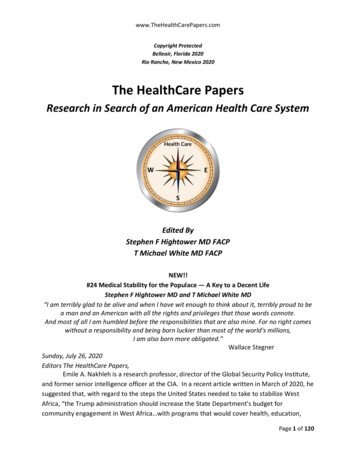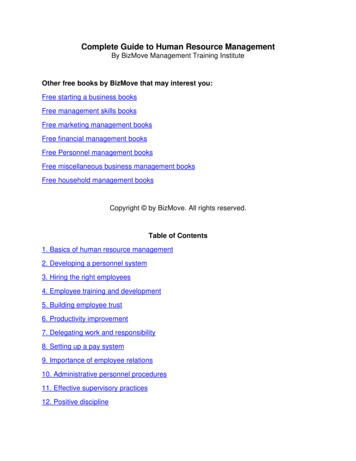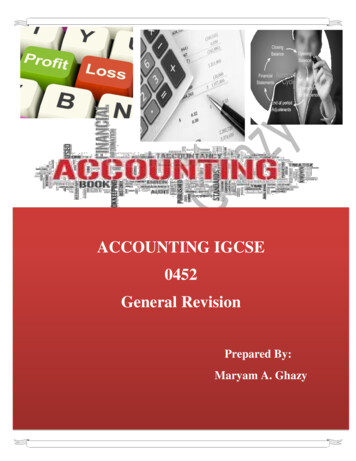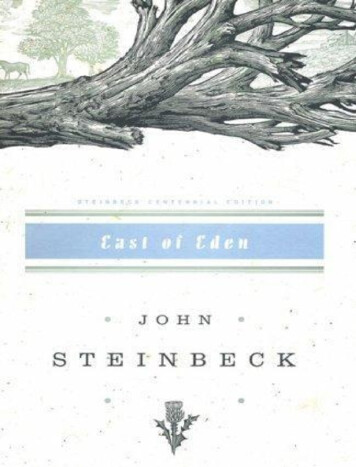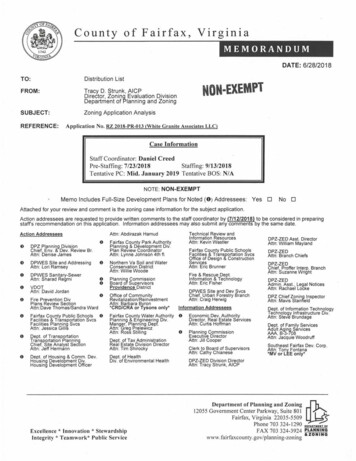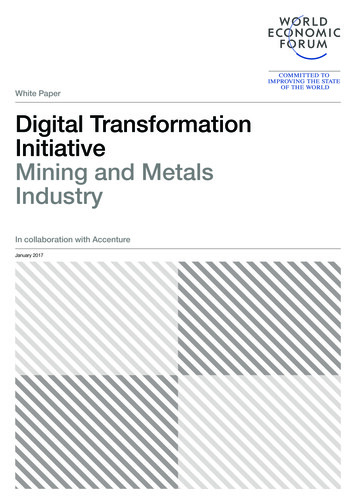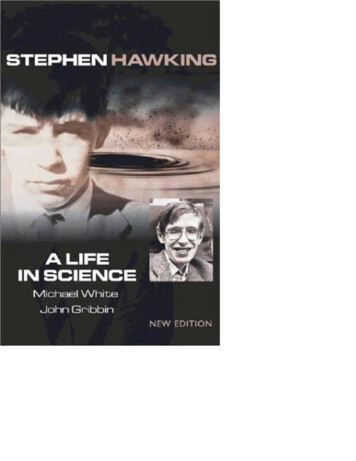
Transcription
Stephen Hawking: A Life in ScienceSecond Editionhttp://www.nap.edu/catalog/10375.htmlOther books by Michael White include:Acid Tongues and Tranquil Dreamers: Tales of Bitter Rivalry that Fueled theAdvancement of Science and TechnologyDarwin: A Life in Science (with John Gribbin)Einstein: A Life in Science (with John Gribbin)Isaac Newton: The Last SorcererLeonardo: The First ScientistLife Out There: The Truth of—and Search for—Extraterrestrial LifeThe Pope and the Heretic: A True Story of Courage and Murder at the Hands of theInquisitionWeird Science: An Expert Explains Ghosts, Voodoo, the UFO Conspiracy, and OtherParanormal PhenomenaThompson Twin: An 80’s MemoirTolkein: A BiographyOther books by John Gribbin include:Almost Everyone’s Guide to ScienceThe Birth of Time: How Astronomers Measured the Age of the UniverseA Brief History of ScienceThe Case of the Missing Neutrinos: And Other Curious Phenomena of the UniverseCompanion to the CosmosEmpire of the Sun: Planets and Moons of the Solar System (with Simon Goodwin)Eyewitness: Time & Space (with Mary Gribbin)Fire on Earth: Doomsday, Dinosaurs, and Humankind (with Mary Gribbin)Hyperspace: The Universe and Its MysteriesIn Search of Schrödinger’s Cat: Quantum Physics and RealityIn Search of the Big Bang: The Life and Death of the UniverseIn Search of the Double HelixIn Search of the Edge of Time: Black Holes, White Holes, WormholesIn the Beginning: The Birth of the Living UniverseOrigins: Our Place in Hubble’s Universe (with Simon Goodwin)Q Is for Quantum: An Encyclopedia of Particle PhysicsRichard Feynman: A Life in Science (with Mary Gribbin)Schrödinger’s Kittens and the Search for Reality: Solving the Quantum MysteriesThe Search for Superstrings, Symmetry, and the Theory of EverythingStardust: Supernovae and Life: The Cosmic Connection (with Mary Gribbin)XTL: Extraterrestrial Life and How to Find It (with Simon Goodwin)Copyright National Academy of Sciences. All rights reserved.
Stephen Hawking: A Life in ScienceSecond N HAWKINGA Life in ScienceNew Updated EditionMichael White and John GribbinThe Joseph Henry PressWashington, D.C.Copyright National Academy of Sciences. All rights reserved.
Stephen Hawking: A Life in ScienceSecond Editionhttp://www.nap.edu/catalog/10375.htmlJoseph Henry Press 2101 Constitution Avenue, N.W. Washington, D.C. 20418The Joseph Henry Press, an imprint of the National Academy Press, was createdwith the goal of making books on science, technology, and health more widelyavailable to professionals and the public. Joseph Henry was one of the founders ofthe National Academy of Sciences and a leader in early American science.Any opinions, findings, conclusions, or recommendations expressed in this volumeare those of the author and do not necessarily reflect the views of the NationalAcademy of Sciences or its affiliated institutions.Library of Congress Cataloging-in-Publication DataWhite, Michael, 1959Stephen Hawking : a life in science / Michael White and JohnGribbin.— New updated ed.p. cm.Includes bibliographical references and index.ISBN 0-309-08410-5 (pbk. : alk. paper)1. Hawking, S. W. (Stephen W.) 2. Astrophysics. 3. Physicists—GreatBritain—Biography. I. Gribbin, John R. II. Title.QC16.H33 W45 2002530′.092—dc212002011961Copyright 1992, 1998, 2002 by Michael White and John Gribbin. All rights reserved.The first edition of this work was published by Viking in 1992.Extracts from A Brief History of Time, copyright Stephen Hawking, 1988,reprinted by permission of Writers House, Inc., New York.Printed in the United States of America.Copyright National Academy of Sciences. All rights reserved.
Stephen Hawking: A Life in ScienceSecond tsPrefaceviiAcknowledgmentsxi1. The Day Galileo Died12. Classical Cosmology213. Going Up404. Doctors and Doctorates565. From Black Holes to the Big Bang746. Marriage and Fellowship877. Singular Solutions1048. The Breakthrough Years1179. When Black Holes Explode13510. The Foothills of Fame152vCopyright National Academy of Sciences. All rights reserved.
Stephen Hawking: A Life in ScienceSecond tsvi11. Back to the Beginning17512. Science Celebrity18713. When the Universe Has Babies20714. A Brief History of Time22015. The End of Physics?25216. Hollywood, Fame, and Fortune26517. A Brief History of Time Travel29218. Stephen Hawking: Superstar304Notes322About the Authors329Index331Copyright National Academy of Sciences. All rights reserved.
Stephen Hawking: A Life in ScienceSecond eWhen Stephen Hawking was involved in a minor road accident inCambridge city center early in 1991, within twelve hours AmericanTV networks were on the phone to his publisher, Bantam, for a lowdown on the story. The fact that he suffered only minor injuries andwas back at his desk within days was irrelevant. But then anythingabout Stephen Hawking is newsworthy. This would never havehappened to any other scientist in the world. Apart from the factthat physicists are seen as somehow different from other humanbeings, existing outside the normal patterns of human life, there isno other scientist alive as famous as Stephen Hawking.But Stephen Hawking is no ordinary scientist. His book A BriefHistory of Time has notched up worldwide sales in the millions—publishing statistics usually associated with the likes of JeffreyArcher and Stephen King. What is even more astonishing is thatHawking’s book deals with a subject so far removed from normalbedtime reading that the prospect of tackling such a text wouldsend the average person into a paroxysm of inadequacy. Yet, as theworld knows, Professor Hawking’s book is a massive hit and hasviiCopyright National Academy of Sciences. All rights reserved.
Stephen Hawking: A Life in ScienceSecond efacemade his name around the world. Somehow he has managed tocircumvent prejudice and to communicate his esoteric theoriesdirectly to the lay reader.However, Stephen Hawking’s story does not begin or end with ABrief History of Time. First and foremost, he is a very fine scientist.Indeed, he was already established at the cutting edge of theoreticalphysics long before the general public was even aware of his existence. His career as a scientist began over thirty years ago when heembarked on cosmological research at Cambridge University.During those thirty years, he has perhaps done more than anyoneto push back the boundaries of our understanding of the Universe.His theoretical work on black holes and his progress in advancingour understanding of the origin and nature of the Universe havebeen groundbreaking and often revolutionary.As his career has soared, he has led a domestic life as alien tomost people as his work is esoteric. At the age of twenty-oneHawking discovered that he had the wasting disease ALS, alsocalled motor neuron disease, and he has spent much of his life confined to a wheelchair. However, he simply has not allowed his illness to hinder his scientific development. In fact, many would arguethat his liberation from the routine chores of life has enabled him tomake greater progress than if he were able bodied. He has achievedglobal fame as a science popularizer with his multimillion-sellingbook, and more recently a BBC television series, Stephen Hawking’sUniverse, while maintaining a high-powered career as a physicist.Stephen Hawking does not like to dwell too much on his disabilities, and even less on his personal life. He would rather peoplethought of him as a scientist first, popular science writer second,and, in all the ways that matter, a normal human being with thesame desires, drives, dreams, and ambitions as the next person. Inthis book we have tried our best to respect his wishes and haveendeavored to paint a picture of a man with talents in abundance,Copyright National Academy of Sciences. All rights reserved.
Stephen Hawking: A Life in ScienceSecond eixbut nonetheless a man like any other.In attempting to describe Professor Hawking’s work as well asthe life of the man behind the science, we hope to enable the readerto see both from different perspectives. Although there areinevitable overlaps in the story, we hope this will help to place thescience within the human context—indeed, to show that, forStephen Hawking, science and life are inextricably linked.Michael White, PerthJohn Gribbin, LewesSeptember 2002Copyright National Academy of Sciences. All rights reserved.
Stephen Hawking: A Life in ScienceSecond ght National Academy of Sciences. All rights reserved.
Stephen Hawking: A Life in ScienceSecond ledgmentsWe would like to thank a number of people who, for one reasonor another, helped to make this book happen: Mark Barty-King,Dr. Robert Berman, Maureen Berman, Roberta Bernstein, staff atthe Cambridge County Library, Professor Brandon Carter, MarcusChown, Michael Church, Virgil Clarke, Sami Cohen, Dr. KevinDavies, Professor Paul Davies, Sue Davies, Fischer Dilke, NormanDix, Dr. Fay Dowker, Professor George Efstathiou, ProfessorGeorge Ellis, Peter Guzzardi, Professor Edward Harrison, ProfessorStephen Hawking, David Hickman, Chris Holifield, ProfessorMaurice Jacob, Dr. David Lindley, Shirley MacLaine, Dr. JohnMcClenahan, Ravi Mirchandani, Dr. Simon Mitton, Dr. JosephNeedham, Professor Don Page, Murray Pollinger, Colonel GeoffreyPryke OBE, Professor Abdus Salam, Professor David Schramm,Professor Dennis Sciama, Lydia Sciama, Professor Paul Steinhardt,Rodney Tibbs, Professor Michael Turner, Dr. Tanmay Vachaspati,Professor Alex Vilenkin, Lisa Whitaker, and Nigel Wood-Smith.xiCopyright National Academy of Sciences. All rights reserved.
Stephen Hawking: A Life in ScienceSecond ght National Academy of Sciences. All rights reserved.
Stephen Hawking: A Life in ScienceSecond Editionhttp://www.nap.edu/catalog/10375.html1The Day Galileo Diedn an upscale restaurant near Cambridge city center, twelveyoung men and women sit around a large, linen-covered tableset with plates and dishes, glasses, and cutlery. To one side is aman in a wheelchair. He is older than the others. He looks terriblyfrail, almost withered away to nothing, slumped motionless andseemingly lifeless against the black cloth cushion of his wheelchair.His hands, thin and pale, the fingers slender, lie in his lap. Set intothe center of his sinewy throat, just below the collar of his opennecked shirt, is a plastic breathing device about two inches in diameter. But despite his disabilities, his face is alive and boyish, neatlybrushed brown hair falling across his brow, only the lines beneathhis eyes belying the fact that he is a contemporary of Keith Richardsand Donald Trump. His head lolls forward, but from behind steelrimmed spectacles his clear blue eyes are alert, raised slightly to survey the other faces around him. Beside him sits a nurse, her chairangled toward his as she positions a spoon to his lips and feeds him.Occasionally she wipes his mouth.I1Copyright National Academy of Sciences. All rights reserved.
Stephen Hawking: A Life in ScienceSecond EN HAWKINGThere is an air of excitement in the restaurant. Around this manthe young people laugh and joke, and occasionally address him ormake a flippant remark in his direction. A moment later the babbleof human voices is cut through by a rasping sound, a metallic voice,like something from the set of Star Wars—the man in the wheelchair makes a response which brings peals of laughter from thewhole table. His eyes light up, and what has been described by someas “the greatest smile in the world” envelops his whole face.Suddenly you know that this man is very much alive.As the diners begin their main course there is a commotion at therestaurant’s entrance. A few moments later, the headwaiter walkstoward the table escorting a smiling redhead in a fake-fur coat.Everyone at the table turns her way as she approaches, and there isan air of hushed expectation as she smiles across at them and says“Hello” to the gathering. She appears far younger than her yearsand looks terribly glamorous, a fact exaggerated by the generalscruffiness of the young people at the table. Only the older man inthe wheelchair is neatly dressed, in a plain jacket and neatly pressedshirt, his immaculately smart nurse beside him.“I’m so sorry I’m late,” she says to the party. “My car was wheelclamped in London.” Then she adds, laughing, “There must besome cosmic significance in that!”Faces look toward her and smile, and the man in the wheelchairbeams. She walks around the table toward him, as his nurse standsat his side. The woman stops two steps in front of the wheelchair,crouches a little and says, “Professor Hawking, I’m delighted tomeet you. I’m Shirley MacLaine.” He smiles up at her and themetallic voice simply says, “Hello.”For the rest of the meal Shirley MacLaine sits next to her host,plying him with question after question in an attempt to discoverhis views on subjects that concern her deeply. She is interested inmetaphysics and spiritual matters. Having spoken to holy men andCopyright National Academy of Sciences. All rights reserved.
Stephen Hawking: A Life in ScienceSecond Editionhttp://www.nap.edu/catalog/10375.htmlThe Day Galileo Died3teachers around the world, she has formulated her own personaltheories concerning the meaning of existence. She has strong beliefsabout the meaning of life and the reason for our being here, the creation of the Universe, and the existence of God. But they are onlybeliefs. The man beside her is perhaps the greatest physicist of ourtime, the subjects of his scientific theories the origin of the Universe,the laws which govern its existence and the eventual fate of all thathas been created—including you, me, and Ms. Shirley MacLaine.His fame has spread far and wide; his name is known by millionsaround the world. She asks the professor if he believes that there isa God who created the Universe and guides His creation. He smilesmomentarily, and the machine voice says, “No.”The professor is neither rude nor condescending; brevity is simply his way. Each word he says has to be painstakingly spelt out ona computer attached to his wheelchair and operated by tiny movements of two of the fingers of one hand, almost the last vestige ofbodily freedom he has. His guest accepts his words and nods. Whathe is saying is not what she wants to hear, and she does not agree—but she can only listen and take note, for, if nothing else, his viewshave to be respected.Later, when the meal is over, the party leaves the restaurant andreturns to the Department of Applied Mathematics and TheoreticalPhysics at the university, and the two celebrities are left alone withthe ever-present nurse in Professor Hawking’s office. For the nexttwo hours, until tea is served in the common room, the Hollywoodactress asks the Cambridge professor question after question.By the time of their encounter in December 1988, ShirleyMacLaine had met many people, the great and the infamous.Several times nominated for an Oscar and winner of one for her rolein Terms of Endearment, she was probably a more famous namethan her host that day. Doubtless, though, her meeting with StephenHawking will remain one of the most memorable of her life. ForCopyright National Academy of Sciences. All rights reserved.
Stephen Hawking: A Life in ScienceSecond EN HAWKINGthis man, weighing no more than ninety pounds and completelyparalyzed, speechless, and unable to lift his head should it fall forward, has been proclaimed “Einstein’s heir,” “the greatest genius ofthe late twentieth century,” “the finest mind alive,” and even, byone journalist, “Master of the Universe.” He has made fundamental breakthroughs in cosmology and, perhaps more than anyone elsealive, he has pushed forward our understanding of the Universe welive in. If that were not enough, he has won dozens of scientificprizes. He has been made a CBE—commander of the Britishempire—and then companion of honour by Queen Elizabeth II andhas written a popular science book, A Brief History of Time, whichstayed on the best-seller list for five years from 1988 to 1993 andhas to date sold over ten million copies worldwide.How did all this happen? How has a man with a progressivewasting disease fought off the ravages of his disability to overcomeevery obstacle in his path and win through? How has he managedto achieve far more than the vast majority of able-bodied peoplewould ever have dreamed of accomplishing?To casual visitors the city of Oxford in January 1942 would haveappeared little changed since the outbreak of the Second World Wartwo and a half years earlier. Only upon closer inspection would theyperhaps have noticed the gun emplacements dotted around the city,the fresh camouflage paint in subdued khaki and gray, the high towers protruding from the car plants at Cowley, east of the dreamingspires, and the military trucks and personnel carriers periodicallytrundling over Magdalen Bridge and along the High, where frostlingered on the stone gargoyles.Out in the wider world, the war was reaching a crucial stage. Amonth earlier, on December 7, the Japanese had attacked PearlHarbor and the USA had joined the war. To the east the Soviet armywas fighting back Hitler’s troops in the Crimea, bringing about theCopyright National Academy of Sciences. All rights reserved.
Stephen Hawking: A Life in ScienceSecond Editionhttp://www.nap.edu/catalog/10375.htmlThe Day Galileo Died5first moves that would eventually precipitate the total defeat of bothGermany and Japan.In Britain every radio was tuned to J. B. Priestley presenting PostScripts to the News; there were Dr. Joad and Julian Huxley arguingover trivia and homely science on the “Brains Trust”; and the“Forces’ sweetheart,” Vera Lynn, was wowing the troops at homeand abroad with “We’ll Meet Again.” Winston Churchill had justreturned from his Christmas visit to America where he hadaddressed both houses of Congress, rousing them with quotes fromLincoln and Washington and waving the V sign. Television waslittle more than a laboratory curiosity.It is perhaps one of those oddities of serendipity that January 8,1942 was both the three-hundredth anniversary of the death of oneof history’s greatest intellectual figures, the Italian scientist GalileoGalilei, and the day Stephen William Hawking was born into aworld torn apart by war and global strife. But as Hawking himselfpoints out, around two hundred thousand other babies were bornthat day, so maybe it is after all not such an amazing coincidence.Stephen’s mother, Isobel, had arrived in Oxford only a short timebefore the baby was due. She lived with her husband Frank inHighgate, a northern suburb of London, but they had decided thatshe should move to Oxford to give birth. The reason was simple.Highgate, along with the rest of London and much of southernEngland, was being pounded by the German Luftwaffe night afternight. However, the warring governments, in a rare display of equanimity, had agreed that if Germany refrained from bombing Oxfordor Cambridge, the Royal Air Force would guarantee peaceful skiesover Heidelberg and Göttingen. In fact, it has been said that Hitlerhad earmarked Oxford as the prospective capital of world government when his imagined global conquest had been accomplishedand that he wanted to preserve its architectural splendor.Copyright National Academy of Sciences. All rights reserved.
Stephen Hawking: A Life in ScienceSecond EN HAWKINGBoth Frank and Isobel Hawking had been to Oxford before—asstudents. They both came from middle-class families. FrankHawking’s grandfather had been quite a successful Yorkshirefarmer but had seen his prosperity disappear in the great agricultural depression that immediately followed the First World War.Isobel, the second eldest of seven, was the daughter of a doctor inGlasgow. Neither family could afford university fees without making sacrifices, and in an age where far fewer women went on tohigher education than we are now accustomed to, it demonstratedconsiderable liberalism on Isobel’s parents’ part that a universityeducation was considered at all.Their paths never crossed at Oxford, as Frank Hawking went upbefore his future wife. He studied medicine and became a specialistin tropical diseases. The outbreak of hostilities in 1939 found himin East Africa studying endemic medical problems. When he heardabout the war he decided to set off back to Europe, traveling overland across the African continent and then by ship to England, withthe intention of volunteering for military service. However, uponarriving home he was informed that his skills would be far moreusefully employed in medical research.After leaving Oxford, Isobel had stumbled into a succession ofloathed jobs, including a spell as an inspector of taxes. Leaving afteronly a few months, she decided to take a job for which she wasridiculously overqualified—as a secretary at a medical researchinstitute. It was there that the vivacious and friendly Isobel, mildlyamused at the position she had found herself in but with sights seton a more meaningful future, first met the tall, shy young researcherfresh back from exciting adventures in exotic climes.When he was two weeks old, Isobel Hawking took Stephen backto London and the raids. They almost lost their lives when he wastwo, when a V2 rocket hit a neighbor’s house. Although their homewas damaged, the Hawkings were out at the time.Copyright National Academy of Sciences. All rights reserved.
Stephen Hawking: A Life in ScienceSecond Editionhttp://www.nap.edu/catalog/10375.htmlThe Day Galileo Died7After the war, Frank Hawking was appointed head of theDivision of Parasitology at the National Institute of MedicalResearch. The family stayed on in the house in Highgate until 1950,when they moved twenty miles north to a large rambling house at14 Hillside Road in the city of St. Albans in Hertfordshire.St. Albans is a small city dominated by its cathedral, which cantrace its foundation back to the year A.D. 303, when St. Alban wasmartyred and a church was built on the site. However, long beforethat the Romans had realized the strategically useful position of thearea. There they built the city of Verulamium, and the firstChristian church was probably constructed from the Roman ruinsleft behind when the empire began to crumble and the soldiersreturned home. In the 1950s, St. Albans was an archetypal, prosperous, middle-class English town. In the words of one ofHawking’s school friends, “It was a terribly smug place, upwardlymobile, but so awfully suffocating.”Hawking was eight when the family arrived there. FrankHawking had a strong desire to send Stephen to a private school.He had always believed that a private school education was an essential ingredient for a successful career. There was plenty of evidence tosupport this view: in the 1950s, the vast majority of members ofParliament had enjoyed a privileged education, and most seniorfigures in institutions such as the BBC, the armed forces, and thecountry’s universities had been to private schools. Dr. Hawkinghimself had attended a minor private school, and he felt that evenwith this semi-elite background he had still experienced the prejudiceof the establishment. He was convinced that, coupled with his ownparents’ lack of money, this had held him back from achievinggreater things in his own career and that others with less ability butmore refined social mores had been promoted ahead of him. He didnot want this to happen to his eldest son. Stephen, he decided, wouldbe sent to Westminster, one of the best schools in the country.Copyright National Academy of Sciences. All rights reserved.
Stephen Hawking: A Life in ScienceSecond EN HAWKINGWhen he was ten, the boy was entered for the Westminster Schoolscholarship examination. Although his father was doing well inmedical research, a scientist’s salary could never hope to cover theschool fees at Westminster—such things were reserved for the likesof admirals, politicians, and captains of industry. Stephen had to beaccepted into the school on his own academic merit; he would thenhave his fees paid, at least in part, by the scholarship. The day ofthe examination arrived and Stephen fell ill. He never sat for theentrance paper and consequently never obtained a place at one ofEngland’s best schools.Disappointed, Dr. Hawking enrolled his son at the local privateschool, St. Albans School, a well-known and academically excellentabbey school which had close ties with the cathedral extending.back, according to some accounts, to the year A.D. 948. Situatedin the heart of the city and close to the cathedral, St. Albans Schoolhad 600 boys when Stephen arrived there in September 1952. Eachyear was streamed as A, B, or C according to academic ability. Eachboy spent five years in senior school, progressing from the first formto the fifth, at the end of which period he would sit for Ordinary(O) Level exams in a broad spectrum of subjects, the brighter boystaking eight or nine examinations. Those who were successful at OLevel would usually stay on to sit for Advanced (A) Levels in preparation for university two years later.In 1952 there were on average three applicants for every place atSt. Albans School and, as with Westminster, each prospective candidate had to take an entrance examination. Stephen was well prepared. He passed easily and, along with exactly ninety other boys,was accepted into the school on September 23, 1952. The fees werefifty-one guineas ( 53.55) a term.The image of Stephen at this time is that of the schoolboy nerd inhis gray school uniform and cap as caricatured in the “Billy Bunter”Copyright National Academy of Sciences. All rights reserved.
Stephen Hawking: A Life in ScienceSecond Editionhttp://www.nap.edu/catalog/10375.htmlThe Day Galileo Died9stories and Tom Brown’s Schooldays. He was eccentric and awkward, skinny and puny. His school uniform always looked a messand, according to friends, he jabbered rather than talked clearly,having inherited a slight lisp from his father. His friends dubbed hisspeech “Hawkingese.” All this had nothing to do with any earlysigns of illness; he was just that sort of kid—a figure of classroomfun, teased and occasionally bullied, secretly respected by some,avoided by most. It appears that at school his talents were open tosome debate: when he was twelve, one of his friends bet another abag of sweets that Stephen would never come to anything. AsHawking himself now says modestly, “I don’t know if this bet wasever settled and, if so, which way it was decided.”1By the third year Stephen had come to be regarded by his teachers as a bright student, but only a little above average in the topclass in his year. He was part of a small group that hung aroundtogether and shared the same intense interest in their work and pursuits. There was the tall, handsome figure of Basil King, who seemsto have been the cleverest of the group, reading Guy de Maupassantat the age of ten and enjoying opera while still in short trousers.Then there was John McClenahan, short, with dark brown hair anda round face, who was perhaps Stephen’s best friend at the time.Fair-haired Bill Cleghorn was another of the group, completed bythe energetic and artistic Roger Ferneyhaugh, and a newcomer inthe third form, Michael Church. Together they formed the nucleusof the brightest of the bright students in class 3A.The little group was definitely the smart kids of their year. Theyall listened to the BBC’s Third Programme on the radio, now knownas Radio 3, which played only classical music. Instead of listeningunder the sheets to early rock ’n’ roll or the latest cool jazz from theStates, Mozart, Mahler, and Beethoven would trickle from theirradios to accompany last-minute physics revision for a test the nextday or the geography homework due the next morning. They readCopyright National Academy of Sciences. All rights reserved.
Stephen Hawking: A Life in ScienceSecond HEN HAWKINGKingsley Amis and Aldous Huxley, John Wyndham, C. S. Lewis,and William Golding—the “smart” books. Pop music was on theother side of the “great divide,” infra dig, slightly vulgar. They allwent to concerts at the Albert Hall. A few of them played instruments, but Stephen was not very dexterous with his hands andnever mastered a musical instrument. The interest was there, but hecould never progress beyond the rudiments, a source of great regretthroughout his life. Their shared hero was Bertrand Russell, at onceintellectual giant and liberal activist.St. Albans School proudly boasted a very high intellectual standard, a fact recognized and appreciated by the Hawkings very soonafter Stephen started there. Before long, any nagging regrets that hehad been unable to enter Westminster were forgotten. St. AlbansSchool was the perfect environment for cultivating natural talent.Much remembered and highly thought of was a master fresh outof university named Finlay who, way ahead of his time, taped radioprograms and used them as launch points for discussion classeswith 3A. The subject matter ranged from nuclear disarmament tobirth control and everything in between. By all accounts, he had aprofound effect on the intellectual development of the thirteen-yearolds in his charge, and his lessons are still fon
about Stephen Hawking is newsworthy. This would never have happened to any other scientist in the world. Apart from the fact that physicists are seen as somehow different from other human beings, existing outside the normal patterns of human life, there is no other scientist alive as famous as Stephen Hawking
